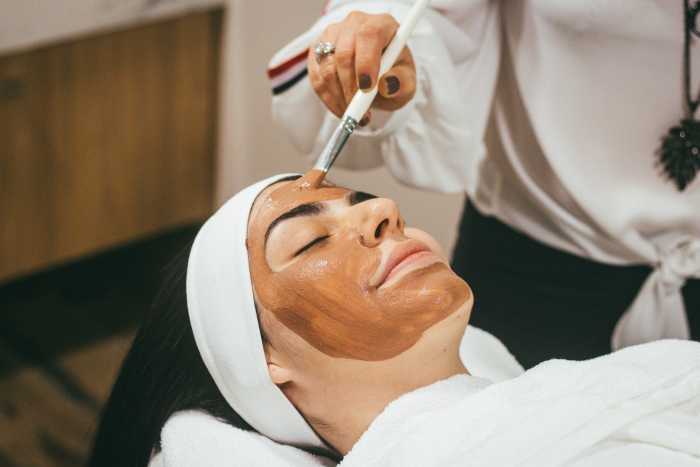How do you know you’re overdoing it with skincare? Our outer covering can equally suffer from regular neglect as well as from too ardent treatment – it is not worth your while to go overboard with your skin!
Irritation, redness
Irritation of the skin can unequivocally indicate that it takes way too many products. This can be really bad for the skin’s health! If you are given to exfoliating too often using different acids interchanging them with beads, your skin might decide it is too much, and consequently go dry and reddish display breakouts and irritation. The fact is, with so many skin products women are tempted to give all of them a go or even mix them, which is not salubrious.
Going Pilly
As your sweater is bound to develop pills, those tiny fuzzy molecules, so can your skin, on the face or elsewhere. Going pilly on you is the skin’s natural reaction to overdoing with beauty products. When you notice that the latest cream makes your skin pill off, it’s either because you have been applying too much lately, or this particular formula isn’t good for you.
Make sure you read the instruction for the suggested amount of the stuff before application.
Problems with Discoloration and Hyperpigmentation
Look carefully at the areas around your chin, nose and eyes – are there dark spots? Did you put it down to sun exposure? They could be well caused by a frequent change of skin-care products. If you have noticed increasing hyperpigmentation, see if you haven’t overdone it with acid peels or some other treatment. Irregular color spots can be the skin’s reaction to over-caring.
If you are too fond of trying out new products, go for patch testing on the wrist. It is much safer so that you won’t have an allergic bout or get your face coming over dry.

There manifest themselves small blisters, crusting and draining even with fluids applied
Small blisters are a very definite symptom of contact dermatitis, so if you get them, start suspecting an allergic reaction or an irritant in the formula. Look through the ingredients: chemical solvents, harsh soaps, certain cosmetics, and deodorants often serve as quite strong irritants.
People are often inclined to think contact dermatitis affects the whole territory that has been treated by an offending product, but that is not necessarily so. The entire face may remain untouched but contact dermatitis will break out here and there, unpredictably, over the face, leaving clean other spots where you also applied the harmful agent.
If you have good reasons to suspect you are developing contact dermatitis, don’t put off a visit to your dermatology specialist.
Your Skin Feels Sticky
There are ingredients that just don’t interact. Retinol, for one, when employed with vitamin C and AHAs, is apt to lose its efficacy altogether. Besides, as ingredients mingle, we are supposed to get one well-mingled formulation acting as a unity. Nevertheless, some emollient bases refuse to blend properly and can consequently create comedogenic and other unwelcome sticky environments like ones known as non-absorptive ‘cloud creams’.
If you have reasons to fear such an impact of multiple products, try to detect the unwelcome stuff by finger. Mistakes in the application too often show themselves when the skin feels sticky and greasy. It is a clear sign telling to switch on to better quality skin-care products and make sure you don’t go heavy on them.
You make your skin even drier as you get on
In addition, ingredients like peels, scrubs, microdermabrasion, retinoids also, tend to cause burning and dryness. If you use not too much cleanser and one that suits you, your skin will remain fresh to the touch, soft, and smooth; if it feels tight and dry, care should be reconsidered.

On the other hand, there are ingredients that affect the skin strangely – it gets a bit worse before they make it better. Performing like this are alpha hydroxy acids, niacin, microdermabrasion crystals, and, again, retinoids. In this case, discuss the benefits of the use of such products with your dermatologist. Should your skin remain red, irritated because it is permanently dry and inflamed, give up on the current product immediately. Your skin needs time to restore.
How to detect excess products?
See if you have a really valid reason behind applying some product or other, make sure this is not just a habit. If it is so, exclude it from your regimen without hesitation.
Mark the current combination of products
When you sit down to take care of your skin, give a thought to the combination of products that you are about to use. You may assume they will achieve the desired effect together, but they may not be working that well in conjunction. If it is so, it can be detrimental to the health of your skin eventually. By minding your regimen combinations you can find ways to remedy the situation.
You need to know which product exactly causes irritation – this test can help

The easiest way to determine the culprit is to take one particular product from your regimen for a longish period, something about two weeks, and observe the changes. You may notice a difference in oiliness /shine, smoothness/dryness, redness/natural tint, and the general feel. Proceed with the experiment, and you can come up with a near-perfect combination in a matter of a couple of months.
Make your skin-care products perform their best for you!
If you get down to it in earnest, there is nothing difficult about it. Mind that experimenting like that won’t be making demands on your wallet (well, you may want to change the whole regimen eventually, but it will come later, if at all).
You have a really large choice of products and you don’t want to chuck any of them? It’s not a reason to use them all, rather, experiment again by alternation. Use glycolic acid for a while and then switch to Retin A. This policy will take the strain off your skin and, incidentally, make your products serve you longer. Those who note the difference can become veritable experts on skin-care products!
Then, when using products for the hydration effect, consider giving a hydrating mask a go for weekends.
The order of application may be important too
For those who habitually apply skin-care products twice, and even thrice, a day, this may be one of the essential points. The right application order can work well for the beauty of your skin, the fatness of your bank account, and remove worries and frustration.
Generally speaking, the correct order would be going from the thinnest consistency to the thickest, serums first, moisturizers/oils second; to round off use an SPF > 30 while the afternoon lasts.











